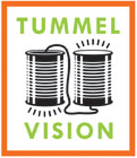Episode Notes
This week’s guest is Molly Steenson, a digital strategist, design researcher, architectural historian and Ph.D. candidate at Princeton University.
Molly joins Deb Schultz and Kevin Marks to discuss the implications of IBM’s Watson winning jeopardy, the hidden links between architecture and interface design, and whether “shipping code” is the only measure for creating value.
A few links we discussed in this episode:
- Don Norman, “I have seen the future and I am opposed” – walled gardens and over reliance on tech
- OM Malik, “Change Is Good, But It’s Also Really Hard”
- Ten Mindful Ways to Use Social Media– the human side of how to engage
- TummelVision Ep. 40 guest Dave Gray on Company as organism
- “The Meet Ben Fisher, The Hard Drinking, No Bullshit, Tech Fixer for SXSW” – Tummeling as job description
- TED Conversations launches: Sign of the increasing importance of Tummeling skills moving online
Molly’s work in her own words
“I’m writing about interactivity and its origins in architecture — human-computer interaction in architecture and urbanism. Right now, I’m focusing on Nicholas Negroponte, the founder of the MIT Media Lab. He was trained as an architect and then founded the Architecture Machine Group at MIT in 1968 (which later became the Media Lab in the 1980s). He tried to apply big ideas of artificial intelligence to architecture and urban planning. Think of Watson winning on Jeopardy — now imagine a Watson that could design cities and buildings in a close relationship with a person. That’s what Negroponte had in mind in the 60s and 70s. Obviously, the technology simply wasn’t advanced enough to do it — but the thinking was provocative and really interesting.The interesting thing to me is that figures like Negroponte, Christopher Alexander (who wrote A Pattern Language) and Richard Saul Wurman (who coined the term “information architecture and founded the TED conference) are all architects by training who had a major impact on our digital worlds. Alexander’s idea about patterns were important for object-oriented programming languages, not to mention for game and interface design. Wurman is one of the godfathers of contemporary information architecture. I wonder why these architects didn’t fit well into the field of architecture but mesh so well with the ways we design today for interactivity.
Outside of my academic work, I’m also interested in mobility, mobile phones and future-casting research. I’ve spent a summer in India researching how people share mobile phones — and as we look at sustainable ways of using objects, sharing gets to be important. I’m working on an amazing project with the Institute for the Future that I can’t talk about… I’ve looked at how friendship is changing in China and England thanks to social networking sites.”




Pingback: Tweets that mention TummelVision 53 tonight: Molly Steenson on Architecture, Interactivity and Urbanism | Tummelvision -- Topsy.com()
Pingback: My Tummelvision episode is up! | girlwonder()